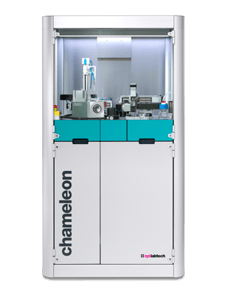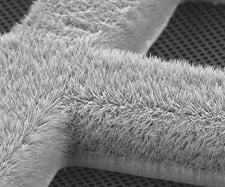
- Applications
-
Products
-
Liquid Handling
- firefly Accelerate genomic research with innovative all-in-one, compact liquid handling
- mosquito Nanolitre liquid handling technology performs ‘traditional’ tasks at a fraction of the volume, and higher speeds
- dragonfly Delivers accurate and repeatable nanolitre to milliliter dispensing
- apricot Automated liquid handling instrumentation for convenient general use across your entire team
- Sample Preparation
-
Sample Management
- comPOUND A scalable, reliable, and secure compound management solution
- BioMicroLab Easy-to-use sample management automation instruments
- arktic Robust biospecimen storage and management down to -80°C
- lab2lab Novel sample and data transfer network system
- comPACT Reliable and efficient -20°C storage and retrieval has never been more accessible
-
Liquid Handling
-
About
- Company With a focus on liquid handling, sample preparation and sample management, our expert teams create state-of-the-art solutions that scientists and researchers can trust Culture We have one overarching mission: to work together to accelerate life science research. Through our innovative solutions and state-of-the-art tools, we believe we can make a real difference to human health Partners Collaboration is key in our mission to make a real difference to human health. Partnering with application leaders globally, we co-create to solve new challenges across the life sciences. Innovation From the initial prototype through to manufacturing, installation and beyond, we bring a problem-solving mindset and technical expertise to drive innovation
-
Executive Leadership
 Through strategic guidance, visionary thinking, and a relentless pursuit of excellence, our senior executives steer SPT Labtech towards achieving its mission of making a real difference to human health through solving advanced laboratory challenges.
Learn more
Through strategic guidance, visionary thinking, and a relentless pursuit of excellence, our senior executives steer SPT Labtech towards achieving its mission of making a real difference to human health through solving advanced laboratory challenges.
Learn more 
-
View all
 Board of Directors
Board of Directors
 Our Board of Directors are committed to driving the long-term success and sustainability of SPT Labtech, providing expert guidance and oversight to execute the company’s ambitious commercial strategy.
Learn more
Our Board of Directors are committed to driving the long-term success and sustainability of SPT Labtech, providing expert guidance and oversight to execute the company’s ambitious commercial strategy.
Learn more 
-
Knowledge Base
- Resources Our wide range of insightful resources include videos, whitepapers, eBooks, application notes and more Events & Webinars Meet the SPT team at events all over the globe and virtually via our webinars Podcast We chat with innovators and leaders from across the community to gain their unique insights. News Latest news from SPT Labtech globally Blog Our latest blog posts feature trends in research, innovative techniques and new technology
-
11 December, 2025
 5 Key Sample Management Automation Trends for 2025- 2026: An Interview with SPT Labtech’s Cory Tiller
Continue reading
5 Key Sample Management Automation Trends for 2025- 2026: An Interview with SPT Labtech’s Cory Tiller
Continue reading 
-
04 December, 2025
.jpg?length=320&name=SBTi%20Target%20Announcement,%20mktg%20(1200%20x%20800%20px).jpg) Delivering Sustainable Science: SPT Labtech Validates GHG Reduction Targets to Meet Customer Needs
Continue reading
Delivering Sustainable Science: SPT Labtech Validates GHG Reduction Targets to Meet Customer Needs
Continue reading 
-
20 November, 2025
 SPT Labtech enables automated PacBio Kinnex full-length RNA-seq library preparation workflow on SPT’s firefly platform
Continue reading
SPT Labtech enables automated PacBio Kinnex full-length RNA-seq library preparation workflow on SPT’s firefly platform
Continue reading 
10
- Careers
A more efficient pathway to quality frozen grids for cryo-EM
Cryo-EM has developed into a powerful tool for studying the fine detail of biological structure required in areas such as drug discovery. Despite this, producing quality frozen grids with vitreous ice of an appropriate thickness and evenly distributed particles remains a key bottleneck in the structure determination workflow.
We drew on decades of experience in structural biology process automation to create chameleon and provide optimizable vitrification for each unique sample behavior, reducing the time and costs associated with traditional trial-and-error methods.
chameleon in the lab

"The chameleon has enabled an efficient cryoEM workflow for Arvinas by allowing us to freeze our samples promptly upon elution from the column, thus allowing rapid capture of complexes on grids ready for cryoEM data collection. By improving sample quality and reducing screening loads on microscopes, chameleon has allowed us to leverage both academic and industry partners for data collection."
— Katie Digianantonio, PhD, Research Investigator, Arvinas
Optimize cryo-EM sample preparation workflows
chameleon streamlines cryo-EM sample preparation workflows with high speed blot-free vitrification, automated grid handling, and the ability to screen grids based on likely ice thickness. Guided workflows simplify set up, use, and cleaning of the instrument while the minimization of manual handling eliminates sample loss and damage.

chameleon
Next generation sample preparation for cryo-EM
chameleon delivers optimized grid vitrification for cryo-EM by combining next-generation automation, blotless grid technology, and high speed plunging. Thinking beyond existing sample preparation workflows enables routine high resolution structural studies.

Quantifoil Active
Self-wicking grids for use exclusively with chameleon
QUANTIFOIL Active grids are unique in being the first commercially produced grids with copper nano-wire covered bars to promote thin film formation through a process of “self-wicking”. This novel grid technology removes the variability of applying an externally applied filter paper to remove excess sample during blotting.

